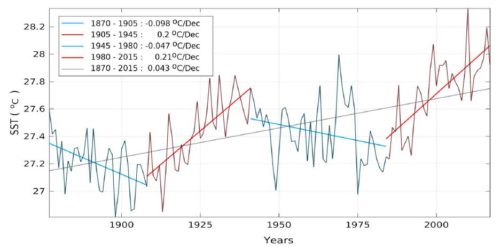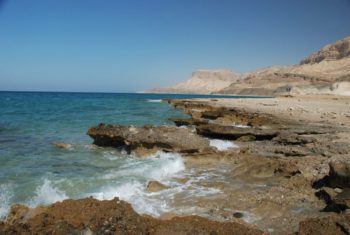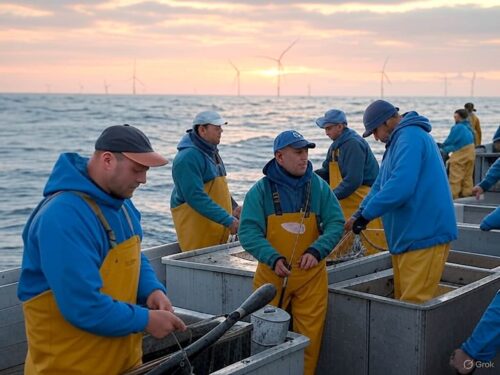AMO cycle on the downward side: Red Sea to cool in the coming decades
By Die kalte Sonne
(German text translated by P Gosselin)
Seven years ago in our book “The Forgotten Sun,” we proposed using ocean cycles for medium-term forecasts.
At the time, the climate establishment was strictly opposed to this. Today, fortunately, times have changed.
On March 15, 2019, a team led by George Krokos analyzed the temperature development of the Red Sea in Geophysical Research Letters, which has become noticeably warmer in recent decades.
The researchers put this into a long-term context and found a strong correlation with the 70-year ocean cycle of the AMO (Atlantic Multidecade Oscillation).
Now that AMO has reached its peak, Krokos and colleagues expect the Red Sea to cool in the next three decades. Abstract (bold added):
Natural Climate Oscillations may Counteract Red Sea Warming Over the Coming Decades
Recent reports of warming trends in the Red Sea raise concerns about the response of the basin’s fragile ecosystem under an increasingly warming climate.
Using a variety of available Sea Surface Temperature (SST) data sets, we investigate the evolution of Red Sea SST in relation to natural climate variability.
Analysis of long‐term SST data sets reveals a sequence of alternating positive and negative trends, with similar amplitudes and a periodicity of nearly 70 years associated with the Atlantic Multidecadal Oscillation.
High warming rates reported recently appear to be a combined effect of global warming and a positive phase of natural SST oscillations.
Over the next decades, the SST trend in the Red Sea purely related to global warming is expected to be counteracted by the cooling Atlantic Multidecadal Oscillation phase.
Regardless of the current positive trends, projections incorporating long‐term natural oscillations suggest a possible decreasing effect on SST in the near future.”

Read more at No Tricks Zone



















